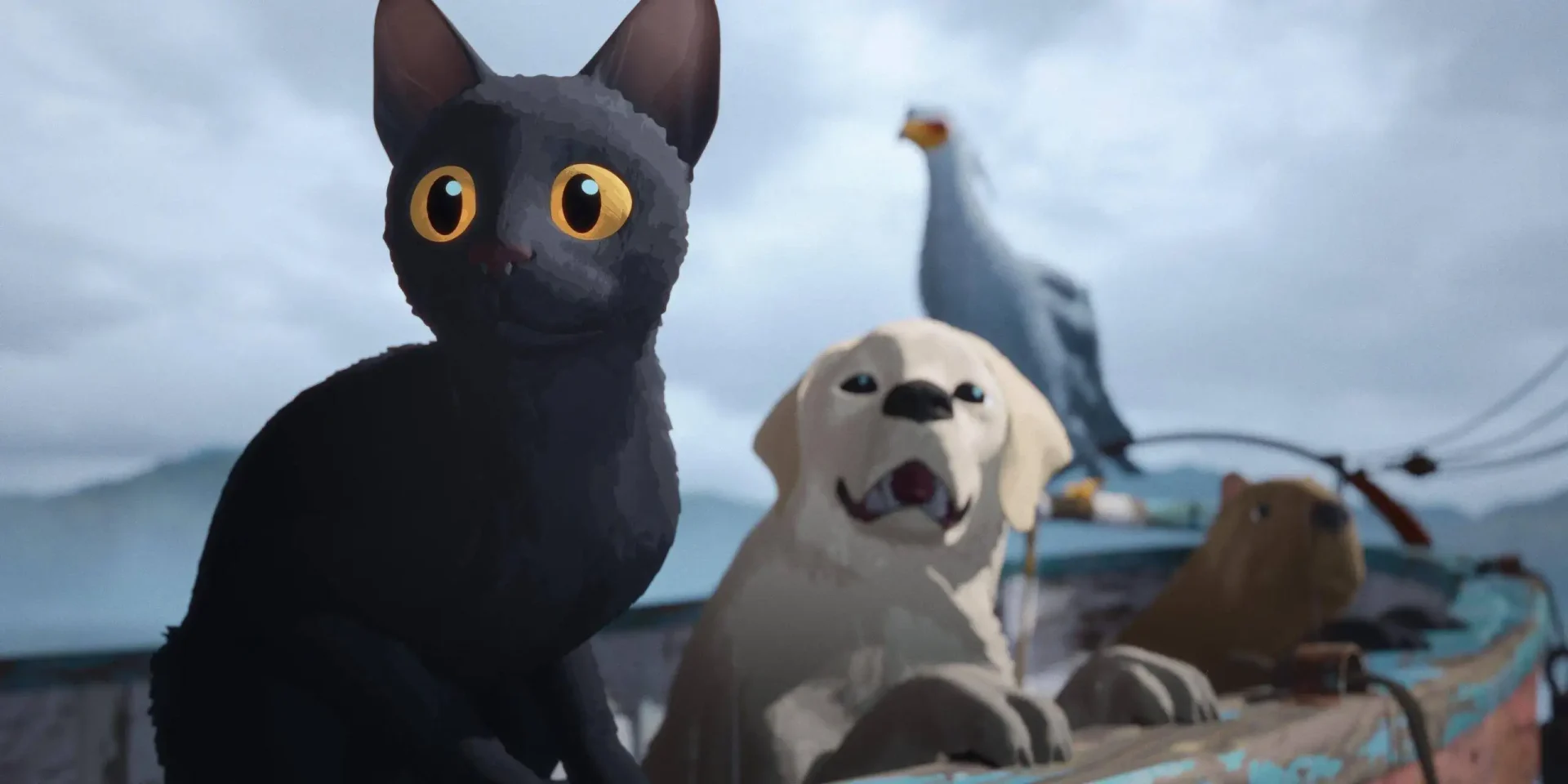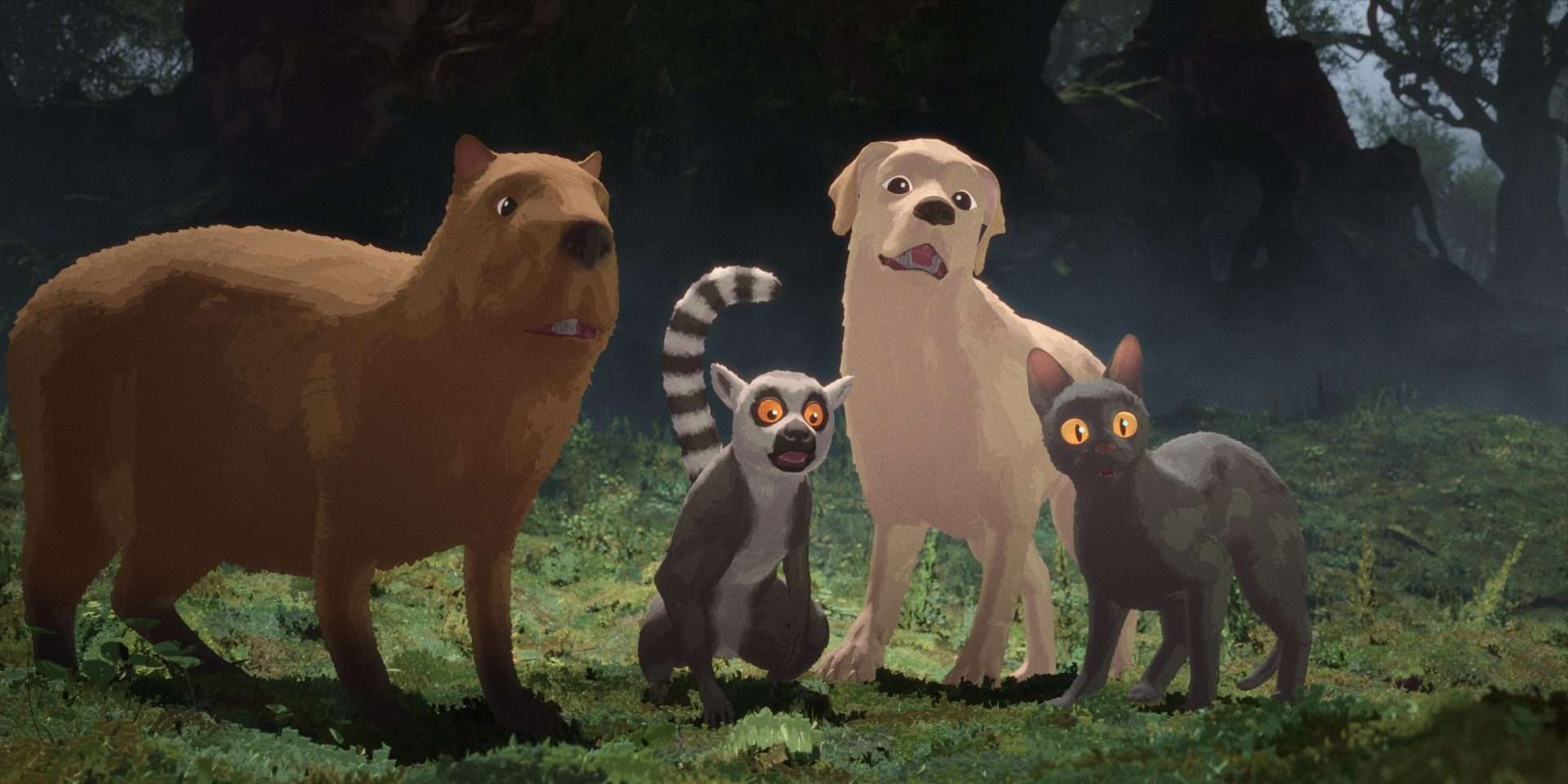It is often said that animation is a medium, and not a genre, and “Flow” might be the perfect example of what makes the art form so exciting. A film this imaginative in its visual design, so poetic in its movements, and so lovingly tender in its emotions could never have been accomplished in anything other than animation. It’s hard not to be floored by the sheer technical perfection of “Flow,” as it is truly a film in which the phrase “every frame is a painting” could actually be applied. However, “Flow” is perhaps most ambitious in its simplicity; there’s a classical story about environment and community being told, but it’s the attention to detail that makes it so enveloping.
“Flow” is set within what appears to be an environment composed of no humans, as the only characters that appear in the film are animals. There’s no dialogue, as even the most expressive of sounds that come from these creatures feel lifted straight from nature. While it doesn’t explicitly state at what point in history it takes place, “Flow” makes it very clear that it is a transitional phase; a great flood is sweeping through the forest, leaving a black cat to fend for itself. The cat’s initial mission is only to survive, but interactions with various communities lead it to form a conclave that could sail away to safety.
There’s an obvious Biblical allusion at play, as the cat literally joins with other animals on an ark at one point as a city begins to fall deep within the ocean. At the same time, there’s also a connection that can be drawn to climate change; while there isn’t the suggestion of blame, “Flow” does imply that nature is having to restore itself due to a disruption to the natural order. There are larger questions to be asked about the context of this apocalyptic incident, but they’re easy to ignore when the film chooses to focus on an individual task at hand. Each step the cat takes to find other creatures, search for food, or gather supplies feels like a satisfying adventure in its own right.

“Flow” isn’t evoking the devastation of nature simply to make a point, but as a means of justifying the somewhat scattershot detours that it takes along the way. If there’s a fault to be had, it’s that any individual sequence of “Flow” feels like it could justify a standalone feature of its own. It helps that “Flow” is one of the most beautiful-looking animated films in recent years, and one of the very few 3D animated films that capture the same hand-drawn quality of 2D. Every image feels inherently primal, such as an isolated set of rocks or a giant tree planted at the center of a forest, revealing itself to have more depth upon further inspection. The cat essentially serves as a guide to the beauty of nature, as the threat of its devastation provokes deeper thoughts about how precious the natural world is.
However, “Flow” is more than just a montage of luscious backgrounds; it’s a very involving adventure story that justifies every moment of its 84-minute running time. In fact, the pace is so consistently exhilarating that it can be easy to forget how radically the characters have changed since the story began. It would be hard to classify “Flow” as a “disaster movie,” because it never seems to cast nature itself as the villain. There’s a beauty to the ways in which the waters envelop the forests, suggesting that this process was an inevitable one. What’s clear is that the storm brewing is also one that is inspiring creativity and creation, as evidenced by the animals forming a raft in which they can peacefully coexist. Their consolidation of resources was enacted out of necessity, but it ended up being beneficial to everyone.

“Flow” resists the urges to turn the animals into overt metaphors for specific aspects of humanity, but they do begin to take some humanistic qualities as the situation grows more dire. There are quibbles over who is in charge, jokes that veer into feuds, and even the suggestion that some species will forsake others for the chance to act superior. “Flow” is a survival movie first and foremost, but it reminds the audience why life is such a valuable asset to protect. Even some of the more broadly characterized creatures (such as a particularly belligerent set of dogs) seem to have a streak of compassion.
“Flow” isn’t expressly aimed at children, but it is certainly a better option for emerging cinephiles of a younger age than the intensely commercialized animated films that have run rampant at the box office this year, such as “Despicable Me 4” or “The Garfield Movie.” While the simplicity is certainly instructive for kids learning about story structure, “Flow” is also a film that gracefully guides its viewers on how to watch it. The sole focus on such minor details might be grating at first, but “Flow” is quickly quite enticing for anyone willing to engage with it on its own terms. A broader approach would have forsaken some of the film’s most beautiful moments, such as the pure sense of joy that comes with seeing a crane fly after having seemingly lost its abilities.
“Flow” is poetic, but not to a fault; there’s an entire history to the world it creates, and a suggestion that the cycle that it shows is at play will continue well into the future. A combination of some rudimentary narrative threads with an unparalleled depth of image makes for a film that looks, feels, and hums like nothing else. “Flow” serves as a compelling testament to the universal language of film, presenting a magnificent vision of harmony in nature that resonates with viewers of all ages, backgrounds, and beliefs. It’s not a coincidence that a film about accepting the necessity of change feels so perfectly suited to put its competitors in the animated medium to shame.



![Hit Big [2022] ‘PÖFF’ Review – A Comedic Crime Caper with Shabbiest Characters](http://www.highonfilms.com/wp-content/uploads/2022/11/Hit-Big-2022-768x432.jpeg)


![Dybbuk [2021] Prime Video Review : Emraan Hashmi helmer horror flick is an out-of-the-box disappointment](http://www.highonfilms.com/wp-content/uploads/2021/10/Dybbuk-Movie-Review-1-768x381.jpg)

